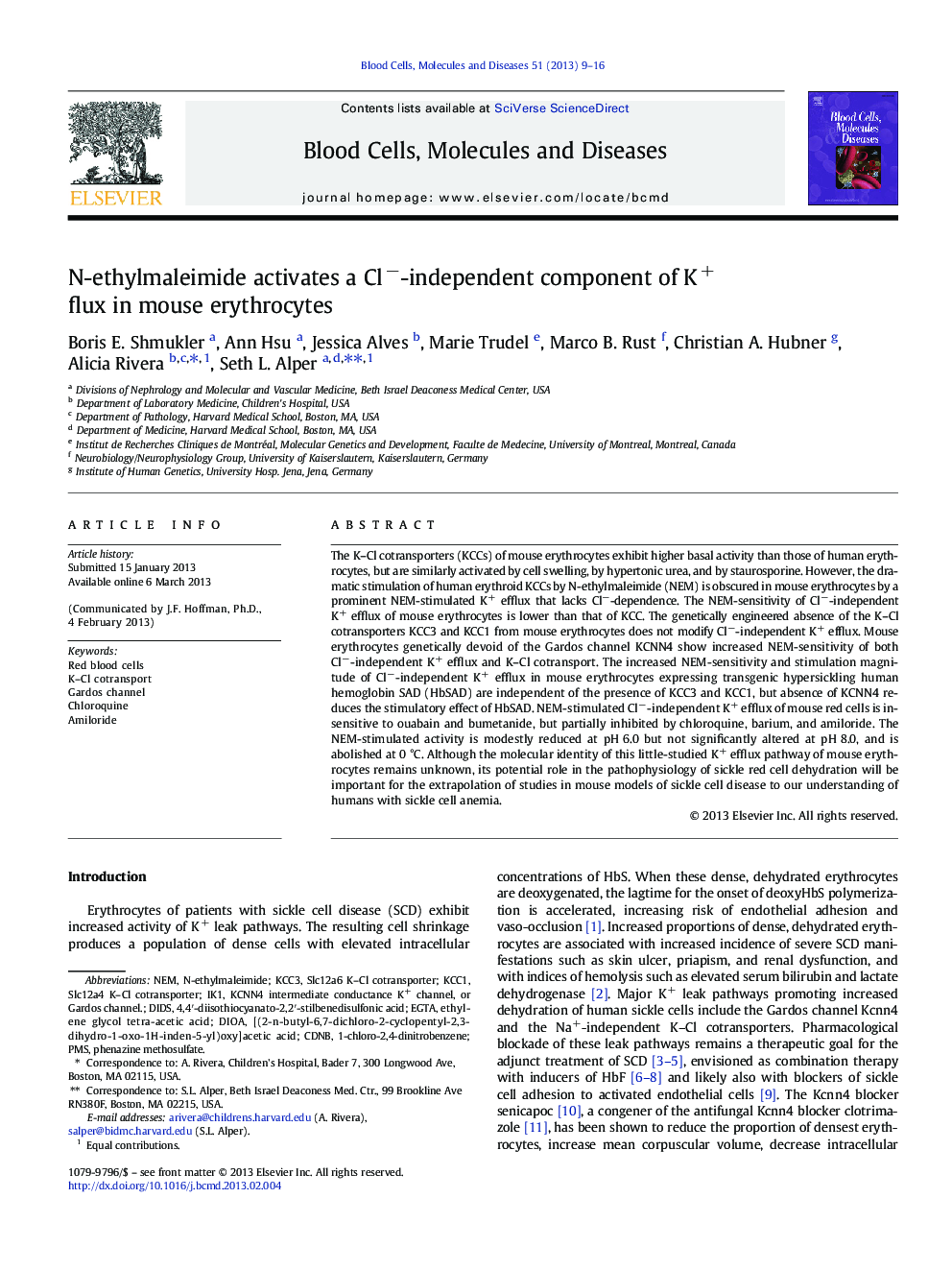| کد مقاله | کد نشریه | سال انتشار | مقاله انگلیسی | نسخه تمام متن |
|---|---|---|---|---|
| 5913549 | 1162436 | 2013 | 8 صفحه PDF | دانلود رایگان |

The K-Cl cotransporters (KCCs) of mouse erythrocytes exhibit higher basal activity than those of human erythrocytes, but are similarly activated by cell swelling, by hypertonic urea, and by staurosporine. However, the dramatic stimulation of human erythroid KCCs by N-ethylmaleimide (NEM) is obscured in mouse erythrocytes by a prominent NEM-stimulated K+ efflux that lacks Clâ-dependence. The NEM-sensitivity of Clâ-independent K+ efflux of mouse erythrocytes is lower than that of KCC. The genetically engineered absence of the K-Cl cotransporters KCC3 and KCC1 from mouse erythrocytes does not modify Clâ-independent K+ efflux. Mouse erythrocytes genetically devoid of the Gardos channel KCNN4 show increased NEM-sensitivity of both Clâ-independent K+ efflux and K-Cl cotransport. The increased NEM-sensitivity and stimulation magnitude of Clâ-independent K+ efflux in mouse erythrocytes expressing transgenic hypersickling human hemoglobin SAD (HbSAD) are independent of the presence of KCC3 and KCC1, but absence of KCNN4 reduces the stimulatory effect of HbSAD. NEM-stimulated Clâ-independent K+ efflux of mouse red cells is insensitive to ouabain and bumetanide, but partially inhibited by chloroquine, barium, and amiloride. The NEM-stimulated activity is modestly reduced at pH 6.0 but not significantly altered at pH 8.0, and is abolished at 0 °C. Although the molecular identity of this little-studied K+ efflux pathway of mouse erythrocytes remains unknown, its potential role in the pathophysiology of sickle red cell dehydration will be important for the extrapolation of studies in mouse models of sickle cell disease to our understanding of humans with sickle cell anemia.
Journal: Blood Cells, Molecules, and Diseases - Volume 51, Issue 1, June 2013, Pages 9-16